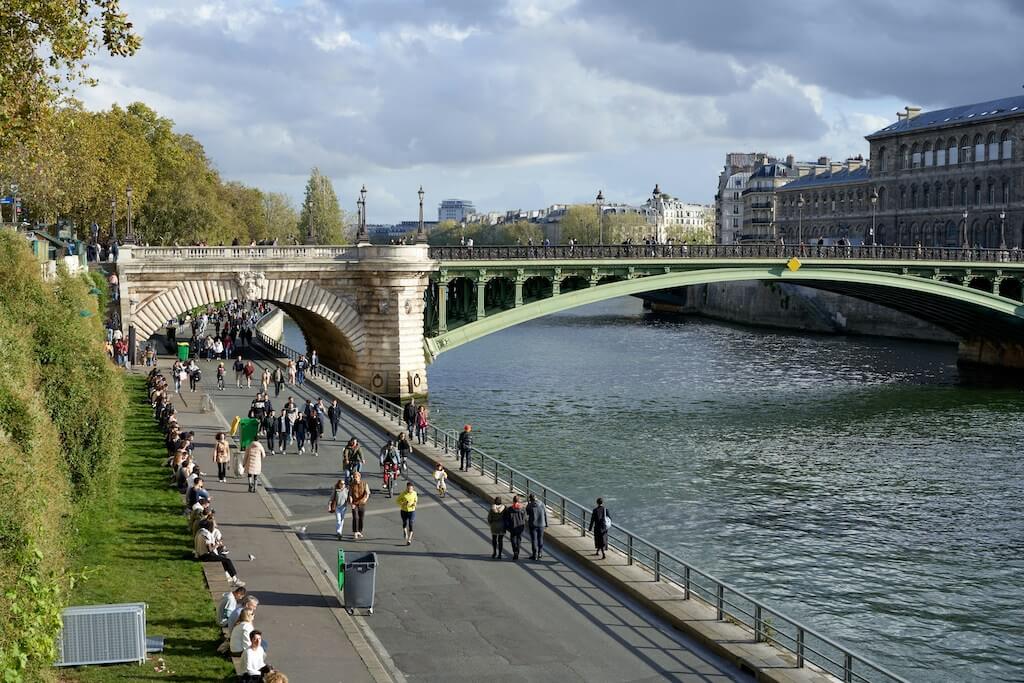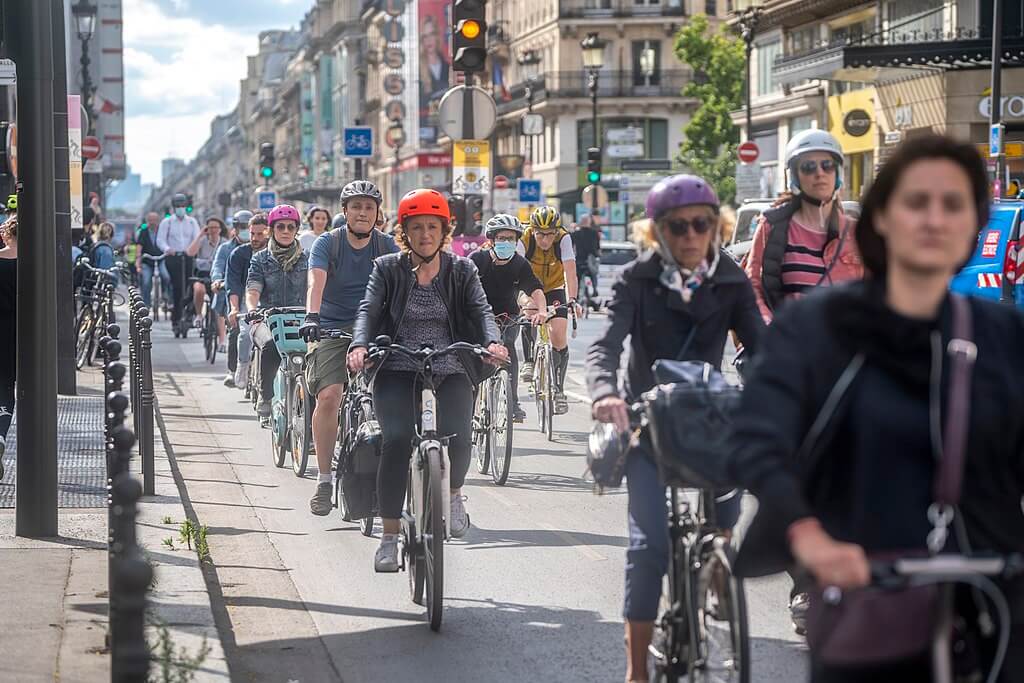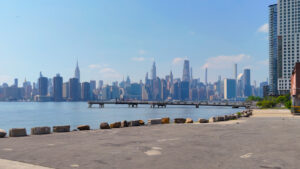Paris Proves the Energy of Pedals: How Biking Helped Minimize Air pollution in Half

It didn’t occur in a single day, however Paris is perpetually modified, and now native residents of the French capital are reaping the rewards. High of record? Cleaner air. Quite a bit cleaner.
Over the previous twenty years, the French capital has undergone a outstanding transformation — and cyclists are driving on the coronary heart of it. A current report by Airparif, the unbiased group that screens air high quality within the Île-de-France area, delivered the sort of information that will have appeared unimaginable 20 years in the past: between 2005 and 2024, ranges of nitrogen dioxide and tremendous particulate matter — two of essentially the most dangerous pollution to human well being — have been slashed by 50% and 55%, respectively.
So how did Paris, as soon as choked with automobile visitors and infamous for its smog, pull off such a turnaround? The reply lies in a daring mixture of insurance policies, infrastructure investments, together with a cultural shift towards biking as a most popular mode of transportation.
Pedal-Powered Progress
Town’s biking revolution didn’t occur in a single day. However when Paris mayor Anne Hidalgo took workplace in 2014, she doubled down on lively transportation. She started reimagining the town not as a car-centric hub, however as a “15-minute metropolis” — a spot the place residents may entry most every day wants inside a brief stroll or bike journey from residence.
“For every new cycle path, there are at all times extra Parisians who get round!” stated Mayor Anne Hidalgo. “Like rue du Renard in Paris Centre, whose new cycle path has rapidly attracted new biking followers.”
Key initiatives just like the pedestrianization of the banks of the Seine and the creation of a Zone à Faibles Émissions (Low Emissions Zone) helped set the tone. Alongside these measures got here an explosion of motorbike infrastructure: over 1,000 km of motorbike lanes now crisscross the town, a lot of them separated and guarded, with whole stretches designated for cyclists and pedestrians solely.
These adjustments dramatically diminished automobile visitors in central Paris, and Parisians responded in variety. Every day bike journeys within the metropolis greater than tripled between 2010 and 2022, and the development solely continues upward, with an estimated a million biking journeys per day now recorded within the area.
And it isn’t simply biking. It’s about placing individuals first. Town’s faculty streets program has additionally been a large success remodeling whole blocks close to faculties to permit youngsters and households to get to high school by strolling or biking safely not having to drive. What an idea!

Rue de Rivoli in Paris, circa 2020
More healthy Air, Fewer Deaths
The impression of this transformation is quantifiable. With fewer combustion engines spewing pollution into the air, the town has seen a constant year-on-year drop in dangerous emissions. In response to Airparif, the mixture of regulatory stress, low-emissions zones, and sustainable transport choices — particularly biking — are instantly liable for the improved air high quality.
And the advantages are extra than simply environmental. The examine estimates that sustaining and increasing present measures may forestall as much as 7,900 untimely deaths as a consequence of pollution-related sicknesses. That’s a staggering determine — and one which underscores the life-saving potential of higher city planning and lively mobility.
The Highway Forward
Nonetheless, challenges stay. Whereas air pollution ranges have fallen throughout a lot of the area, areas close to main roadways — such because the Périphérique ring highway and main highways such because the A1 and A6 — are drawback zones. And with stricter EU air high quality requirements set to return into impact by 2030, some 2.6 million residents (or 20% of the regional inhabitants) are projected to nonetheless be uncovered to dangerous ranges except additional motion is taken.
This implies extra of what’s already working: extra bike lanes, extra car-free zones, extra public assist for lively transportation.
Paris’s journey is a masterclass in how a metropolis can reclaim its air, its streets, and its id by way of the ability of coverage — and the pedal. It’s additionally a well timed reminder for different main cities dealing with their very own air pollution challenges: in order for you cleaner air, begin by making house for bikes.
Sure, Paris just isn’t the one instance, it is just the newest. Cities corresponding to Amsterdam, Utrecht and Copenhagen have change into the best examples of bicycle-friendly cities on the planet. Not surprisingly, they’re additionally usually credited as being amongst essentially the most livable on the planet, providing a high quality of life that’s unrivalled.
It could possibly occur. It’s properly documented that these cities additionally favored the automobile for many years however the will of the general public received out over time. It could possibly occur in North American cities too the place many areas are transferring in that path.






